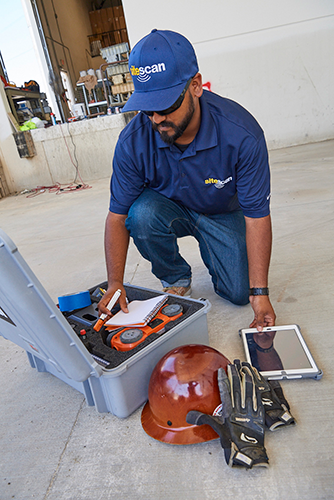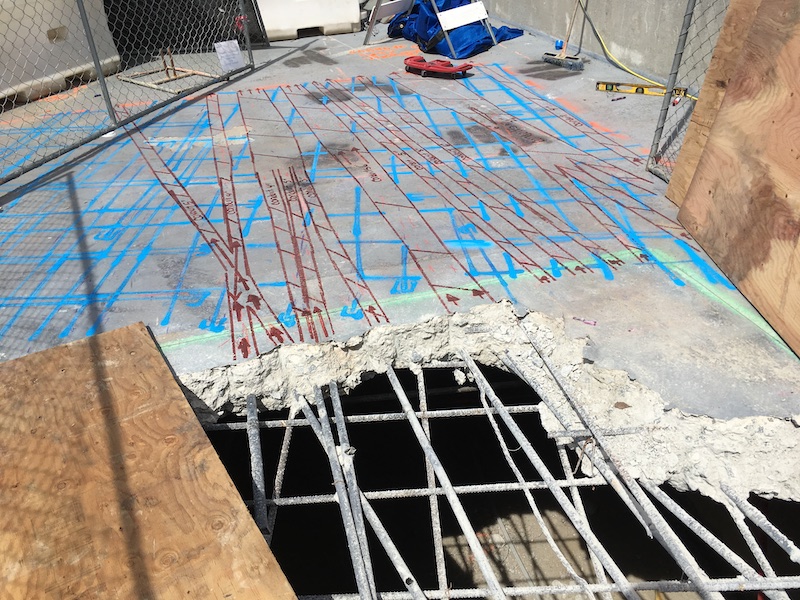Nationwide RainierGPR Service Areas for Advanced Concrete Scanning
Nationwide RainierGPR Service Areas for Advanced Concrete Scanning
Blog Article
Concrete Scanning: A Critical Step In The Direction Of Ensuring Structural Integrity and Safety
In the world of building and construction and framework upkeep, the importance of concrete scanning can not be overemphasized. This thorough procedure holds the key to revealing possible threats concealed beneath the surface area of relatively strong structures. By employing advanced modern technology and techniques, concrete scanning acts as a pivotal device in making certain that the honesty and security of buildings and bridges are maintained to the greatest standards. Nevertheless, beyond its surface-level implications, the function of concrete scanning prolongs much deeper than meets the eye.
Value of Concrete Scanning
Concrete scanning plays a vital role in ensuring the architectural integrity and security of buildings and infrastructure tasks. By utilizing sophisticated technologies such as ground-penetrating radar (GPR) and electro-magnetic induction, professionals can non-destructively check concrete structures to detect potential issues, spaces, ingrained objects, and support design. This process allows very early detection of anomalies that could jeopardize the security of a structure, stopping pricey damages and guaranteeing the safety and security of passengers.
Prior to exploration, reducing, or coring right into concrete, scanning assists determine the specific places of rebar, post-tension cords, and various other embedded aspects, reducing the risk of unintentional hits that might lead to structural weaknesses. Furthermore, concrete scanning aids in high quality control by confirming the thickness of concrete covers and discovering any disparities that might impact the general longevity of the structure.
Technology for Concrete Inspection

Benefits of Very Early Discovery
Timely detection of structural problems can substantially mitigate dangers and ensure the durability of building and construction projects. By identifying potential problems early in the building process, stakeholders can take positive actions to address issues before they escalate right into bigger and much more costly problems. One of the essential benefits of very early discovery is the avoidance of architectural failings, which can posture serious security threats and bring about task hold-ups and economic losses.
Furthermore, early detection allows for timely repair services and upkeep, which can aid extend the lifespan of the framework. By addressing concerns promptly, building groups can prevent costly repairs or also the requirement for premature substitute of architectural elements. This proactive approach not just conserves money and time however also boosts the total safety and security and durability of the building and construction job.
Additionally, early detection can boost task preparation and decision-making by offering stakeholders with beneficial understandings into the problem of the framework. Equipped with this info, job managers can make enlightened options regarding building and construction materials, timelines, and methods, bring about extra effective and effective task outcomes.
Ensuring Structural Security
Guaranteeing the architectural stability of a building job is paramount to its security and long life. Structural stability describes the ability of a building or infrastructure to maintain its type and feature under various loads and ecological problems. To accomplish this, extensive assessment and surveillance of the structure are essential. Concrete scanning plays a crucial duty in guaranteeing architectural stability by spotting prospective concerns such as gaps, delamination, or reinforcement corrosion that might jeopardize the honesty of the framework over time.
By making use of sophisticated scanning innovations like ground-penetrating radar (GPR) and electromagnetic induction, building experts can non-invasively inspect concrete structures to determine areas of problem underneath the surface area. This positive method allows for the very early discovery of weak points or problems, enabling timely repair work or support to protect against architectural failures.
Normal concrete scanning during various building and construction stages and throughout the life cycle of a framework can help preserve its security, alleviate threats, and guarantee the safety and security of passengers. By prioritizing structural stability via concrete scanning, construction jobs can enhance their durability and resilience, ultimately adding to better security and durability.

Protecting Against Critical Failures
To safeguard versus catastrophic occasions, meticulous monitoring and aggressive maintenance are imperative in avoiding critical failures within architectural frameworks. Discovering potential problems before they escalate is crucial to avoid structural failings. Applying regular assessments, such as concrete scanning, can expose surprise problems like spaces, cracks, or rust that can compromise the stability of a framework. By using advanced scanning innovations like Ground Passing through Radar (GPR) or Concrete X-ray, designers can non-destructively analyze the problem of concrete and determine weak points that require support or repair service - RainierGPR Service Areas.

Conclusion
In final thought, concrete scanning plays an essential duty in making sure architectural honesty and safety by using advanced technology for early detection of potential concerns. This positive technique assists avoid critical failures and makes certain the security of frameworks. It is necessary to prioritize concrete examination as a common method to secure the long life and security of buildings and framework.
Concrete scanning plays Get More Info a vital role in ensuring the architectural honesty and safety and security of structures and infrastructure jobs. In addition, concrete scanning help in top quality control by confirming the density of concrete covers and discovering any kind of inconsistencies that may influence the total resilience of the structure. Concrete scanning plays an essential duty in making sure structural security by finding potential issues such as gaps, delamination, or reinforcement deterioration that might jeopardize the stability of the structure over time.

In conclusion, concrete scanning plays a vital duty in making sure architectural honesty and safety by using innovative technology for early detection of prospective concerns.
Report this page